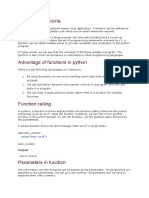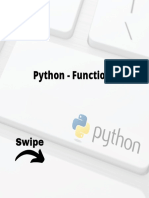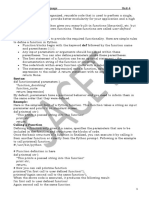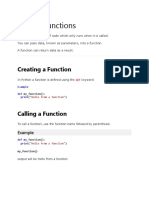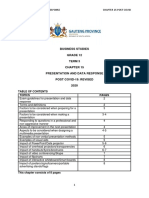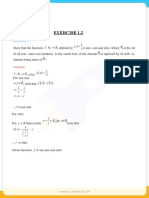0% found this document useful (0 votes)
8 views8 pagesFile Handling Notes
The document explains the concept of functions in Python, including how to define, call, and pass arguments to functions. It covers various types of arguments such as keyword arguments, default parameter values, and passing different data types like lists, strings, tuples, and dictionaries. Additionally, it provides examples of defining functions and demonstrates the use of return values with practical applications like calculating simple interest and the area of a circle.
Uploaded by
uwugifts23Copyright
© © All Rights Reserved
We take content rights seriously. If you suspect this is your content, claim it here.
Available Formats
Download as DOCX, PDF, TXT or read online on Scribd
0% found this document useful (0 votes)
8 views8 pagesFile Handling Notes
The document explains the concept of functions in Python, including how to define, call, and pass arguments to functions. It covers various types of arguments such as keyword arguments, default parameter values, and passing different data types like lists, strings, tuples, and dictionaries. Additionally, it provides examples of defining functions and demonstrates the use of return values with practical applications like calculating simple interest and the area of a circle.
Uploaded by
uwugifts23Copyright
© © All Rights Reserved
We take content rights seriously. If you suspect this is your content, claim it here.
Available Formats
Download as DOCX, PDF, TXT or read online on Scribd
/ 8



